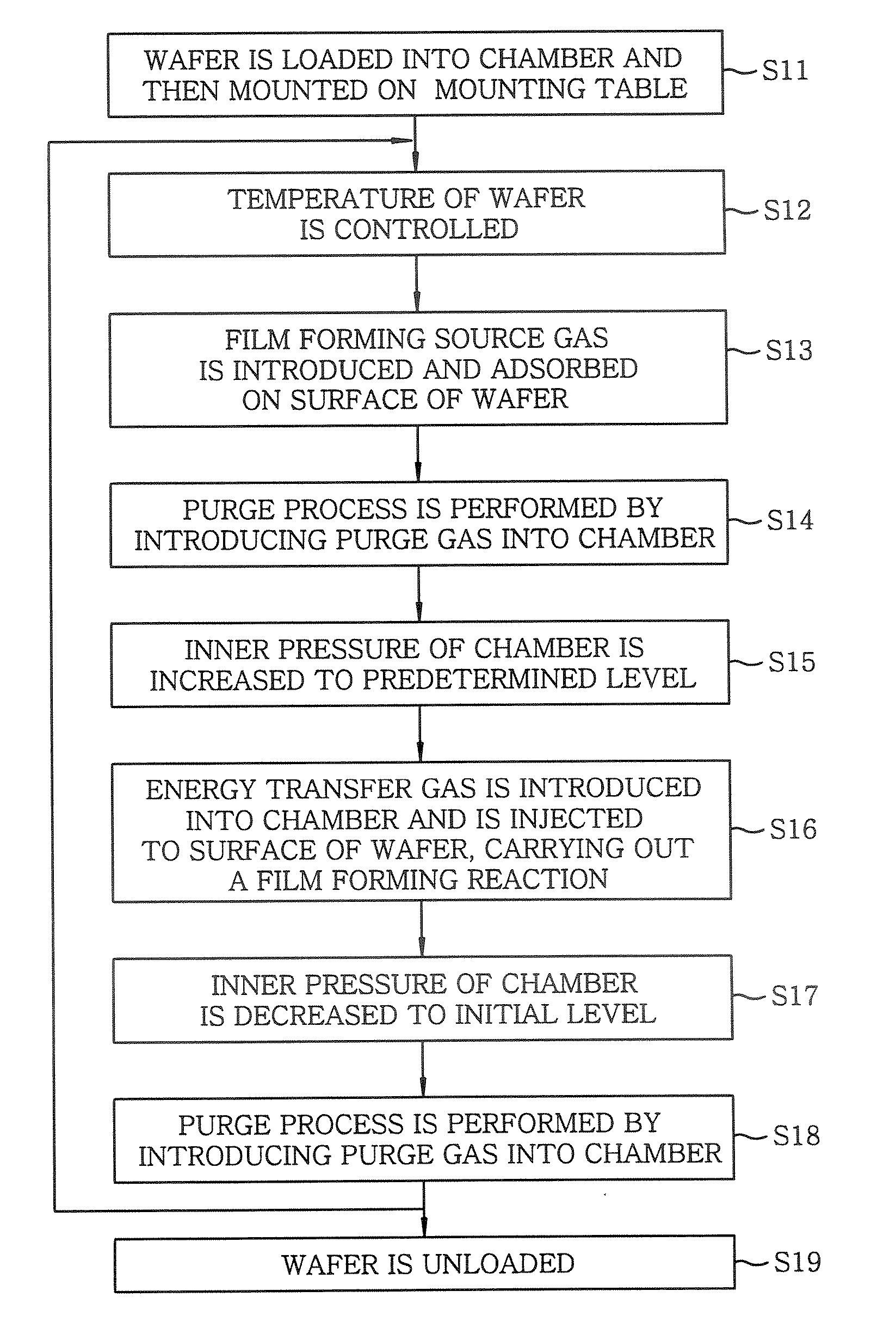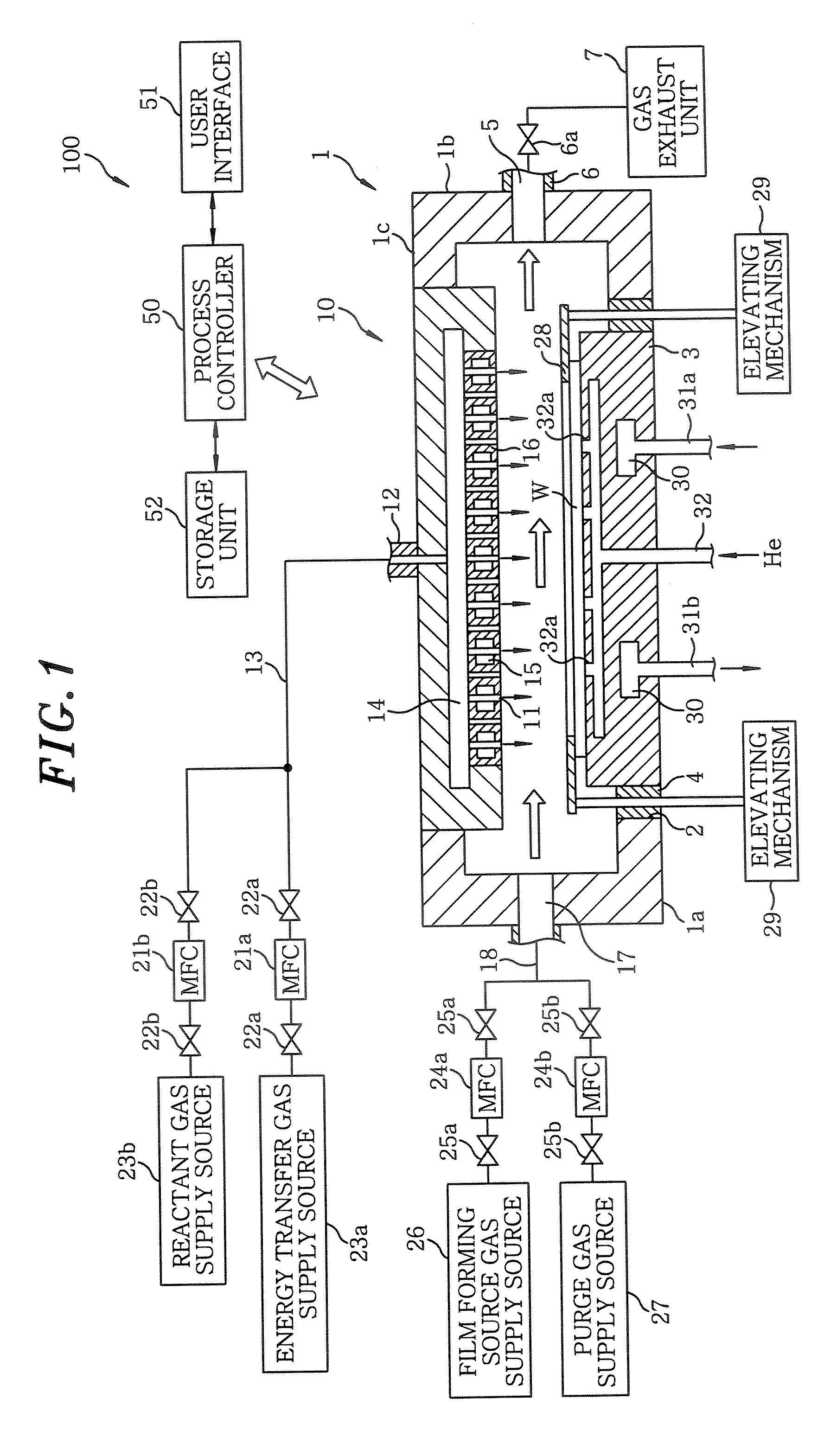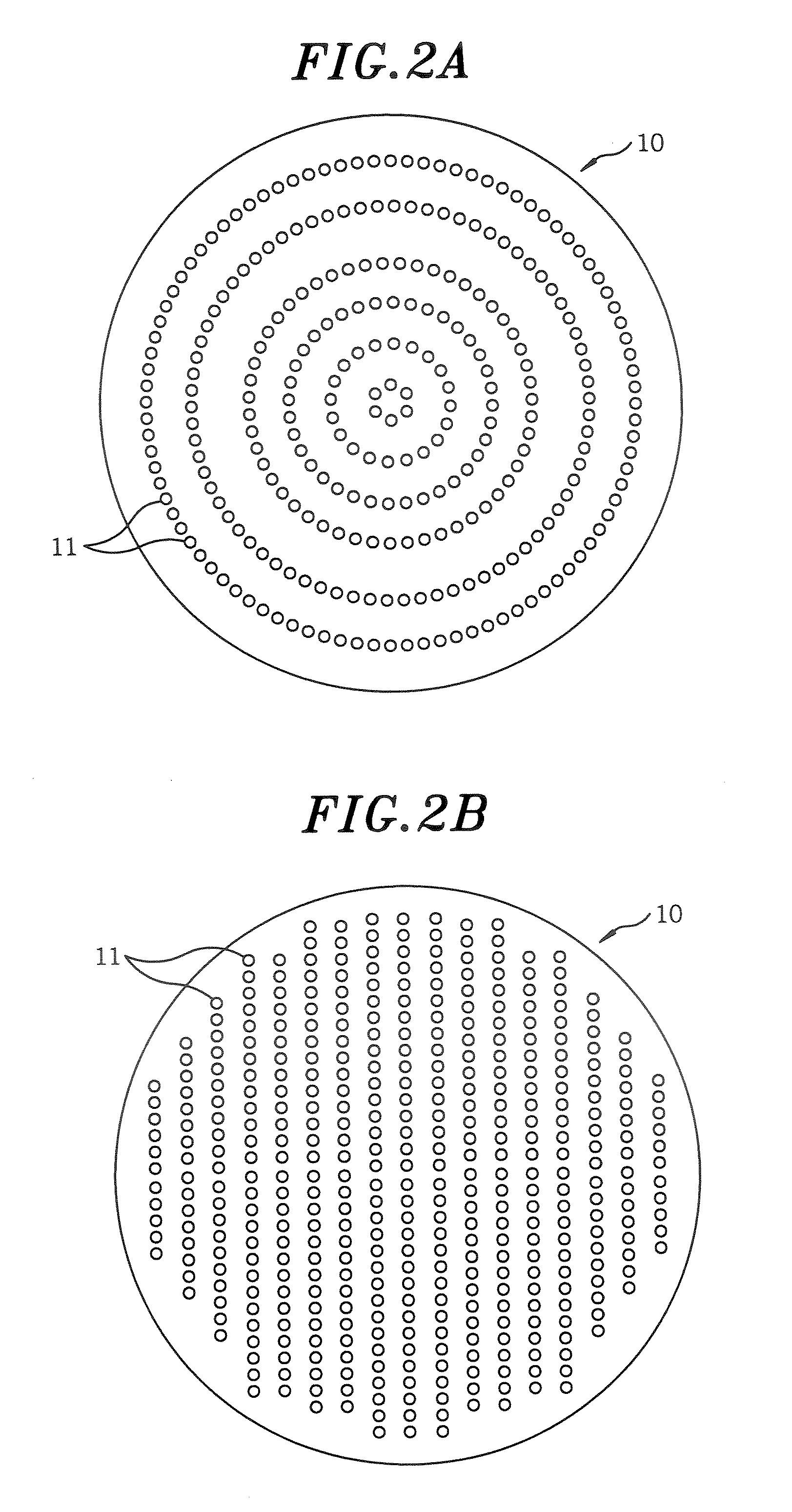Film forming method and apparatus
a film and forming technology, applied in the direction of coatings, chemical vapor deposition coatings, metallic material coating processes, etc., can solve the problems of poor time responsiveness in controlling an on/off of energy supply, deterioration of step coverage performance, and gas phase reaction, and achieve high step coverage
- Summary
- Abstract
- Description
- Claims
- Application Information
AI Technical Summary
Benefits of technology
Problems solved by technology
Method used
Image
Examples
example 1
[0150] A wafer W having a diameter of 300 mm was loaded via a transfer robot (not shown) into an aluminum vacuum film forming apparatus having a mounting table whose temperature is controllable as in FIG. 1 and then mounted on the mounting table having a temperature controlled to a preset level of 100° C.
[0151] A liquid source material of Ru(EtCp)2 was introduced into a vaporizer heated to 150° C. and, then, the vaporized gas was introduced into the vacuum film forming apparatus by a carrier gas of Ar. As for an oxidizing gas (reactant gas) O2 was used. Introduced into the chamber 1 were Ru(EtCp)2, Ar serving as a carrier and dilution gas; and O2 serving as a reactant gas and Ar serving as an energy transfer gas heated to a high temperature for a film forming reaction.
[0152] Next, a film forming process was carried out by performing following steps 1 to 4. FIG. 14 shows a timing chart of the film forming process in this example:
[0153] Step 1;
[0154] Ru(EtCp)2 of 0.1 g / min and the...
example 2
[0162] A wafer W having a diameter of 300 mm was loaded via a transfer robot (not shown) into an aluminum vacuum film forming apparatus having a mounting table whose temperature is controllable as in FIG. 1 and then mounted on the mounting table having a temperature controlled to a preset level of 100° C.
[0163] A liquid source material of Ru(EtCp)2 was introduced into a vaporizer heated to 150° C. and, then, the vaporized gas was introduced into the vacuum film forming apparatus by a carrier gas of Ar. Introduced into the chamber 1 were Ru(EtCp)2, Ar serving as a carrier and dilution gas; and H2 serving as a reactant gas and Ar as an energy transfer gas heated to a high temperature for a film forming reaction.
[0164] Next, a film forming process was carried out by performing following steps 1 to 4. FIG. 15 shows a timing chart of the film forming process in this example:
[0165] Step 1;
[0166] Ru(EtCp)2 of 0.2 g / min and the carrier gas of Ar of 100 mL / min (sccm) were set to flow for...
example 3
[0174] A wafer W having a diameter of 300 mm was loaded via a transfer robot (not shown) into an aluminum vacuum film forming apparatus having a mounting table whose temperature is controllable as in FIG. 1 and then mounted on the mounting table having a temperature controlled to a preset level of 100° C.
[0175] A liquid source material of Ru(EtCp)2 was introduced into a vaporizer heated to 150° C. and, then, the vaporized gas was introduced into the vacuum film forming apparatus by a carrier gas of Ar. Introduced into the chamber 1 were Ru(EtCp)2, Ar serving as a carrier and dilution gas; and Ar serving as an energy transfer gas heated to a high temperature for a film forming reaction.
[0176] Next, a film forming process was carried out by performing following steps 1 to 4. FIG. 16 shows a timing chart of the film forming process in this example:
[0177] Step 1;
[0178] Ru(EtCp)2 of 0.2 g / min and the carrier gas of Ar of 100 mL / min (sccm) were set to flow for 20 seconds while setting...
PUM
| Property | Measurement | Unit |
|---|---|---|
| temperature | aaaaa | aaaaa |
| temperature | aaaaa | aaaaa |
| pressure | aaaaa | aaaaa |
Abstract
Description
Claims
Application Information
 Login to View More
Login to View More - R&D
- Intellectual Property
- Life Sciences
- Materials
- Tech Scout
- Unparalleled Data Quality
- Higher Quality Content
- 60% Fewer Hallucinations
Browse by: Latest US Patents, China's latest patents, Technical Efficacy Thesaurus, Application Domain, Technology Topic, Popular Technical Reports.
© 2025 PatSnap. All rights reserved.Legal|Privacy policy|Modern Slavery Act Transparency Statement|Sitemap|About US| Contact US: help@patsnap.com



